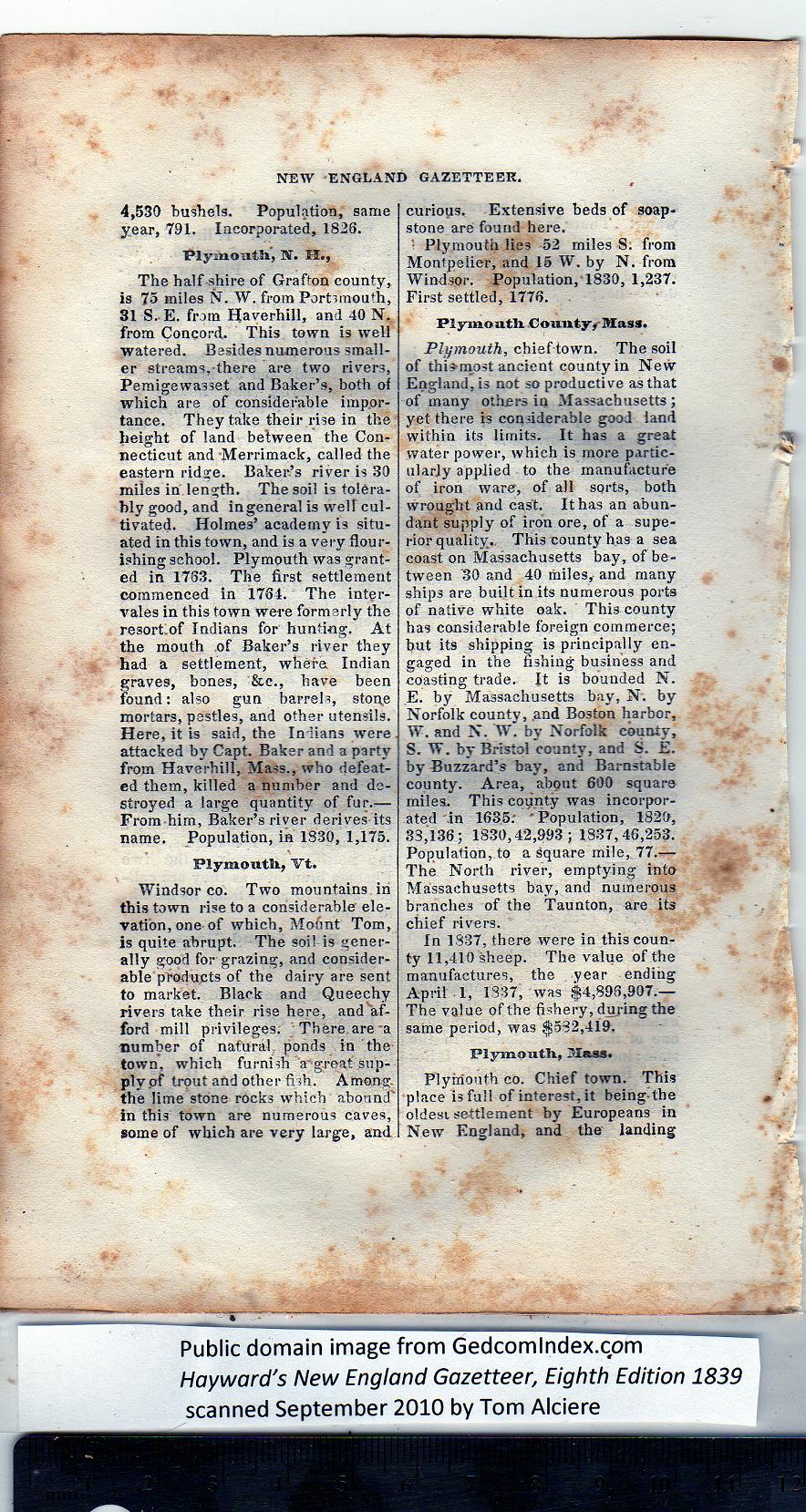|
4,530 bushels. Population, same
year, 791. Incorporated, 1826.
Plymouth, N. H«,
The half shire of Grafton county,
is 73 miles N. W. from Portsmouth,
31 S.-E. from Haverhill, and 40 N.
from Concord. This town is well
watered. Besides numerous small-
er streams,-there are two rivers,
Pemigewasset and Baker’s, both ot
which are of considerable impor-
tance. They take their rise in tbe
height of land between the Con-
necticut and Merrimack, called the
eastern ridge. Baker’s river is 30
miles in length. The soil is tolera-
bly good, and ingeneral is well cul-
tivated. Holmes’ academy is situ-
ated in tbis town, and is a very flour-
ishing school. Plymouth was grant-
ed in 1753. The first settlement
commenced in 1764. The inter-
vales in this town were formerly the
resort.of Indians for hunting. At
the mouth of Baker’s river they
had a settlement, whera Indian
graves, bones, &e., have been
found: also gun barrels, stone
mortars, pestles, and other utensils.
Here, it is said, the Indians were .
attacked by Capt. Baker and a party
from Haverhill, Mass., who defeat-
ed them, killed a number and de-
stroyed a large quantity of fur.—
From-hirn, Baker’s river derives its
name. Population, in 1830, 1,175.
Plymouth,, Vt.
Windsor co. Two mountains in
this town rise to a considerable ele-
vation, one of which, Mount Tom,
is quite abrupt. The soil is gener-
ally good for grazing, and consider-
able products of tbe dairy are sent
to market. Black and Queechy
rivers take their rise here, and af-
ford mill privileges. There are a
number of natural ponds in tbe
town, which furnish a'great sup-
ply of trout and other fidi. Among,
the lime stone rocks which abound'
in this town are numerous caves,
some of which are very large, and
curious. Extensive beds of soap-
stone are found here. |
: Plymouth lies 52 miles S. from
Montpelier, and 15 W. by N. from
Windsor. Population, 1830, 1,237.
First settled, 1776.
Plymouth County^Hasi.
Plymouth, chief town. The soil
of thi^most ancient county in New
England, is not so productive as that
of many others in Massachusetts;
yet there is considerable good land
within its limits. It has a great
water power, which is more partic-
ularly applied to the manufacture
of iron ware, of all sorts, both
wrought and cast. It has an abun-
dant supply of iron ore, of a supe-
rior quality. This county has a sea
coast on Massachusetts bay, of be-
tween '30 and 40 miles, and many
ship3 are built in its numerous ports
of native white oak. This county
has considerable foreign commerce;
but its shipping is principally en-
gaged in tbe fishing business and
coasting trade. It is bounded N.
E. by Massachusetts bay, N. by
Norfolk county, .and Boston harbor,
W. and N. W. by Norfolk county,
S. W. by Bristol county, and S. E.
by Buzzard’s bay, and Barnstable
county. Area, about 600 square
miles. This county was incorpor-
ated in 1635: 'Population, 1829,
33,136; 1830,42,993; 1837,46,253.
Population, to a square mile, 77.—
The North river, emptying into
Massachusetts bay, and numerous
branches of the Taunton, are its
chief rivers.
In 1337, there were in tbis coun-
ty 11,410 sheep. The value of the
manufactures, the year ending
April .1, 1337, was $4,896,907.—
The value of the fishery, during the
same period, was $532,419.
Plymouth, Maas.
Plymouth co. Chief town. Tbis
place is full of interest, it being-the
oldest settlement by Europeans in
New England, and the landing |
